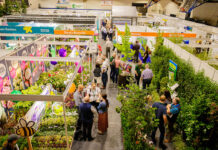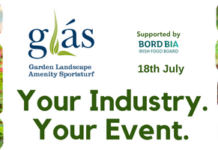


Agrohomeopathy – using homeopathic remedies for natural pest control and treatment of plant disease. I am a registered homeopath specialising in the area of agrohomeopathy – the use of homeopathic remedies for plant pest control and the treatment of plant disease. The remedies are natural and non-toxic and are safe to use in the garden and farm.





To enter the competition for a free place at the upcoming workshop please answer the question below. What venue will the workshop take place in? Answer should be emailed to martinbyrne.hom@gmail.com. The deserving winner will be pulled from a hat!
Agrohomeopathy – using homeopathic remedies for natural pest control and treatment of plant disease. I am a registered homeopath specialising in the area of agrohomeopathy – the use of homeopathic remedies for plant pest control and the treatment of plant disease. The remedies are natural and non-toxic and are safe to use in the garden and farm.
It was during my training as a homeopath from 2003 to 2007 that the idea of using homeopathy for ‘Plant Health’ was first discussed among my classmates. In theory it could work. Our thinking was that if it works on humans and animals why not plants? None of us knew anything about the term ‘Agrohomeopathy’ at the time and it is still in its infancy to some degree.
I’ve been working as a homeopath since 2007 and have become increasingly interested and drawn towards ‘Agrohomeopathy’ – the use of homeopathic remedies on plants and soil for pest control, disease treatment and plant propogation.
The main principal behind Agrohomeopathy is that rather than fighting the disease or the pest, you help build up the immunity of the plant against that particular disease or pest so that they can then fight the disease or pest themselves with a healthy immune system, as their immune system was originally designed to do. ‘Treat the plant not the pest‘.
This is much the same as using homeopathy in humans the idea being that you treat the whole person building up their immune system so they can fight disease. A healthy plant can stave off disease just like a healthy human. The result being that we end up consuming a healthier plant and therefore more healthy ourselves, reduce the overwhelming reliance on fossil fuels and chemicals, reduce ground pollution, water pollution and the overall effect is a healthier planet. Eliminating chemicals and fossil fuels completely is currently not an option as we have become so reliant on them as a species, but a reduction is possible.
Homeopathic remedies are made from substances mainly from plant, mineral and animal material. Homeopathic remedies are ultra dilute and are made by taking some of the original substance (e.g. the Arnica plant, used for plant injuries) and either soaking it in alcohol or for mineral remedies, grinding them in a pestal and mortar, then a series of dilution and succusion (shaking) until the required potency is reached. Because of the dilution of the substances they are non toxic. Most homeopathic remedies are now made in Laboratories under strict conditions.
The main advantage of using homeopathic preparations in the garden or the farm is that they are non toxic to you, your family, your plants, your pets, birds, bees and the general ecology. Now that a lot of people are ‘Growing their own’ at home people are becoming more aware of the the amount of chemicals that are used in gardens and farms around the country. Most of us would be averse to putting chemicals on our plants or vegetables purely on health grounds. Using homeopathy can considerably reduce the need for herbicides, pesticides and fossil fuels in our gardens and farms. They are also easy to apply, store and are very inexpensive.
Not only would you helping the environment get back to some sort of normality but you would be improving your own health too by reducing the amount of chemicals you ingest.
Using the remedies in the garden is simple. Just select the remedy you need, e.g. Helix Tosta 6x for snails or slugs. If you’re using a liquid remedy put one drop into one lite of water (or with pills, one pill into a litre of water) and shake it vigorously(about 50 times). Then transfer into a 10 litre watering can and fill it up. Pour this onto the roots of the plant that is being attacked and that’s it. Only repeat if the attacks continue but do give it at least a week before you’re sure that the plants are being attacked still. One dose is usually enough. The remedies can be used in all weathers. If you are using the same watering can for feeding plants and remedies just make sure to scald the can with boiling water before and after use as this will prevent overdose of the remedies.
So what happens the pests? They simply go elsewhere to eat something else, probably weeds. If your neighbour happens to have an increased snail problem perhaps you might tell them about the remedies? The remedies do not kill any of the pests, the immunity of the plant now keeps them at bay and the pests will go for something that has a weaker immunity. This is much like bacteria or viruses in humans. Most of us that are healthy can stave off viruses and bacteria, in fact we do it constantly without being aware of it. It’s when our immune systems become weak that viruses and bacteria have a chance to attack and get past our defences and it is the same with plants. The healthier the plant the less chance of an attack from pests or disease. The homeopathic remedies help to build up the plant’s immune system.
The idea of Agrohomeopathy has been around for quite some time but it is only in recent times that it has been put into practice mainly through the work of pioneers such as Vaikunthanath Das Kaviraj (Homeopathy for Farm and Garden), who will be giving a workshop on the subject at the Botanic Gardens on 26 & 27 April 2012.
Like homeopathy itself, agrohomeopathy was somewhat stumbled upon and one of the main stumblers was Vaikunthanath Das Kaviraj who while treating a family in Switzerland was asked to give his opinion on the health of their apple trees. They had an ongoing rust problem in apple trees. The apples had dark red rings on the skin and needed more watering than normal. The symptoms of redness with thirst seemed to him to correlate with the symptoms in humans that would indicate the remedy Belladonna, which he reluctantly but duly administered. He was reluctant because he did not know whether it would work or not. To everyone’s surprise, the rust problem disappeared and as a bonus the apples the following year tasted noticeably better. This is one of the benefits of having healthy plants, they produce better and tastier crops.
I met Kaviraj at a conference last October in Gloucester UK and it was there that the idea of doing a workshop at the Botanic Gardens took hold. We are very lucky to have him present at the workshop as he is highly respected worlswide. His depth of knowledge not just on homeopathy, but also on horticulture is inspiring.
There has been a growing body of reasearch in this area over the last few years with very positive results on pest control, disease control and eradication, crop yield and increase in quality of crop worldwide. Research has been carried out in Universities in Brazil (University Vicosa, Universidade Federale de Minas Gerais Brazil to name but two) on crop plants with very positive results. Personally i believe there is massive potential for the use of homeopathic remedies for pest contraol and plant disease commercially and for the individual gardener.
I started using remedies in my own garden during my training and since (I’ve only had a proper garden in 2011!). I use remedies for pest control, such as slugs, snails and aphids, also for fungal infections, seed propagation, replanting from pots, frost injuries, blackspot on Roses etc. I, like many, was sceptical of the remedies working on plants but to my surprise and delight they did work. What started out as ‘theoretically possible’ has turned into a mainstay in my gardening exploits I am happy to say. A word of caution though, it is important to feed your plants and have good soil, dig in well rotted amnure etc. The remedies can only do so much. Much like with humans if plants are not fed properly or overfed they will get sick and attract pests and disease.
Agrohomeopathy Workshop Botanic Gardens 26 & 27 April 2012
The workshop at the Botanic Gardens Dublin on 26 & 27th April with Kaviraj is suitable for Homeopaths, home growers, organic/biodynamic farmers and those interested in another approach to Horticulture and Agriculture.
The idea of the workshop is to teach individuals about homeopathic remedies and how to use them in the garden and farm to give people the tools so they can manage pests and disease in a sustainable way and to be self reliant and competant with the use of remedies.
The workshop will discuss an overview of the principles behind agrohomeopathy, demonstrate diagnosis of plant disease and nutrient problems, discuss remedies for pest control (such as snails, slugs and aphids), outline treatment of plant disease using homeopathic remedies
Discuss the advantages of using remedies in horticulture and agriculture, demonstrate practical examples with video & photo material
Any questions or gardening problems you may have will be happily discussed and solutions offered.
Some of the more common Agrohomeopathic remedies are:
Helix Tosta – This is a fantastic remedy for slugs and snails. It is made from toasted shell of a snail that is a predator of the common garden snail. This does not kill or poison the slugs and snails but discourages them from chomping on your plants. They’ll still be around probably snacking on weeds or heading off to your neighbour’s garden.
Coccinella – Another remedy made from a predator, the Ladybird. It is a wonderful remedy for aphids or soft bodied pests in general such as lmites, green fly etc.
Thuja – Thuja is made from the conifer of the same name and is a remedy for plants that have become infected by insects that bore into the plant, such as Leaf Miners, gall wasps etc.
Silica – Silica is used in Agrohomeopathy to give plants strength. Plants that are weak or don’t thrive or that are prone to fungal infections will benefit from Silica. It is also very useful to help seeds to geminate and will help to produce a strong plant.
Allium Cepa – The common onion is used in remedy form to keep off pests like Carrot root fly and onion fly. It is in its normal state as an onion a companion plant to carrots.
Aconite – For shock, frost, replanting from pots to soil etc.
Arnica – Injuries, bruise like patches on bark, replanting from pots to soil. Arnica help with shock and general injuries to plants. Arnica is a very commonly used ‘human’ remedy for injuries and bruising.







